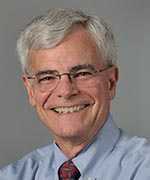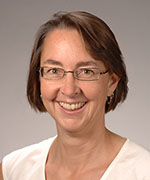From the Deputy Director for Intramural Research
Equity and Diversity in the NIH Intramural Research Program

Michael Gottesman

Gisela Storz
How can equity and diversity in the NIH intramural research program (IRP) continue to be improved? The NIH Equity Committee (NEC) was established in November 2017 to help address this question. Modeled on the Central Tenure Committee, the NEC comprises 20 members—18 senior scientists and two scientific directors (SDs)—representing almost all institutes and centers (ICs). As its first task, the committee has been meeting with the SDs from each IC to learn about the demographics and resource distribution in their intramural programs.
In advance of each meeting, the SD—often with the help of the clinical director (CD) for that IC—provides de-identified information about the IC’s tenure-track scientists, tenured scientists, senior scientists, and senior clinicians. The SD also provides an organizational chart showing the demographics of the IRP leadership and a written summary that comments on the data and addresses the hiring procedures, review practices, and selection process for ad hoc Board of Scientific Counselors (BSC) members. [The Deputy Director for Intramural Research (DDIR) and NIH Committee Management approve the members of the main BSC and ensure diversity; the ad hoc members are chosen by the ICs]. The summary also specifies how discretionary funding is awarded to investigators and includes proposed corrections to the investigator-selection process that would ensure diversity; equity and inclusion goals; and recommendations for how the NEC and the Chief Officer for Scientific Workforce Diversity can help the IC achieve those goals.
At the meeting with the NEC, the SD gives a presentation about the information provided. Two committee members serve as primary reviewers and prepare a report that the NEC chair presents at a joint meeting of the SDs and CDs. The reports are constructed to share each IC’s best practices as well as identify areas that need attention. To date, the NEC has evaluated the intramural programs of 12 ICs. The SDs have indicated that reviewing these data and getting feedback from the NEC has been a valuable experience.
The presentations have been highlighting trends across the IRP. One striking trend is the under-representation of certain groups in biomedical research—women, Asian Americans, and others—in leadership positions. The presentations also highlight extremely long tenures for some lab and branch chiefs (or their equivalents).
Given that a dynamic organization thrives on diversity and new ideas, in October 2018 the NEC submitted a document to the DDIR with four main recommendations:
1. Each IC must clearly define the duties and expectations of lab and branch chiefs (or their equivalents).
2. The effectiveness of all lab and branch chiefs (or their equivalents) must be evaluated every four years by the BSCs. (Although the BSCs now evaluate the quality of intramural research at least every four years, they don’t always evaluate the leadership effectiveness of the lab and branch chiefs.)
3. Lab and branch chiefs should remain in their positions for no more than three four-year BSC review cycles (plus time prior to the initial review and up to two years after the third cycle of positive reviews), except in extraordinary circumstances. This recommendation assumes that the BSC reviews are positive; if any of the reviews are negative, it’s anticipated that the turnover of lab and branch chiefs would happen more quickly.
4. Leadership appointments must occur through open and transparent processes.
The NEC’s recommendations—with input from the SDs, CDs, and NIH senior leadership—have now been converted into policy. Discussions are still ongoing about how this policy will be implemented. For example, one new policy will be that current lab and branch chiefs whose service exceeds the three cycles of BSC review will be expected to step down within two years after the next BSC review of their lab or branch. Each IC is expected to have a completed plan by January 2020. Each SD will present their implementation plans to both the DDIR and NEC in the coming year.
Other trends are also being noted by the NEC. As a result of the frequent comment that many potential tenure-track candidates are not even aware of the tremendous benefits of working in the IRP, the NEC recommended that a “Rising Stars” seminar program be developed: Extramural junior scientists who are doing exciting research will be invited to give seminars at NIH. This recognition will allow IC investigators to become familiar with the work of the Rising Stars, who will in turn learn about the IRP. The NEC was encouraged by the very large response to the first call for nominations. Look for “Rising Star” talks in the coming months.
Much still remains to be done, however, to improve equity and diversity across the IRP. The NEC is very interested in any ideas you might have. Please send us your ideas: storzg@mail.nih.gov or gottesmm@mail.nih.gov.
Gisela Storz is an NIH Distinguished Investigator in the Eunice Kennedy Shriver National Institute of Child Health and Human Development. For more information on the way that BSCs work, go to https://oir.nih.gov/sourcebook/processes-reviewing-nih-intramural-science/boards-scientific-counselors.
This page was last updated on Monday, April 4, 2022
